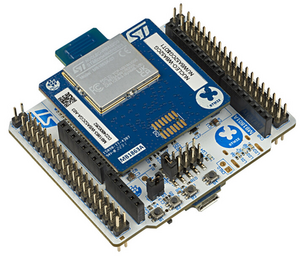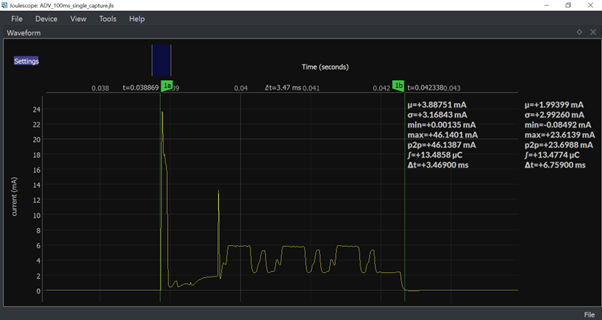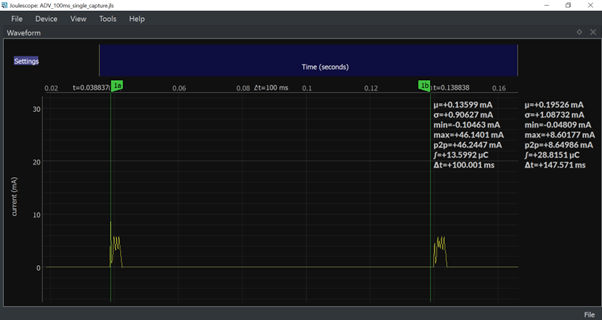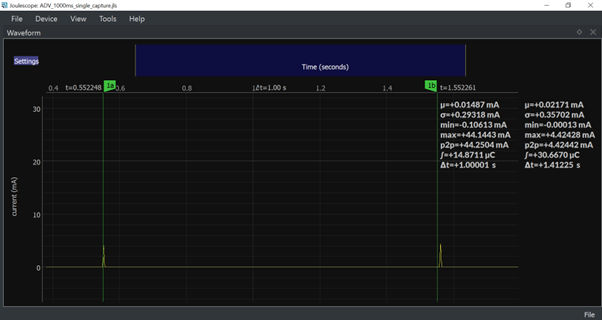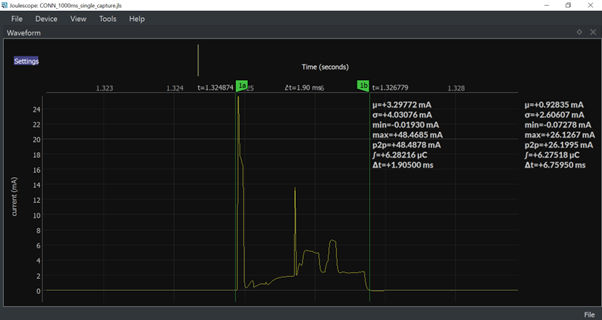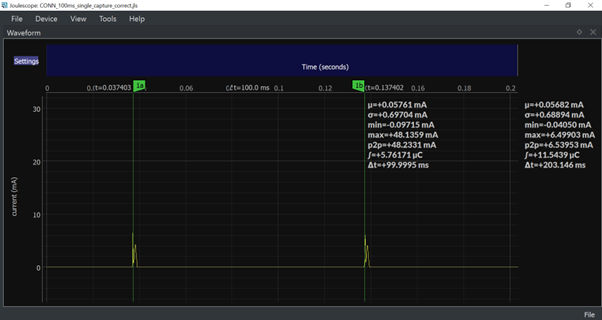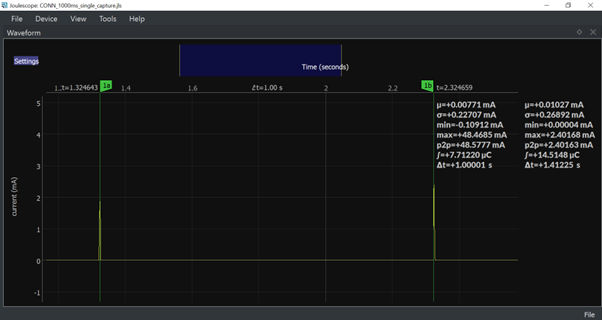1. Bluetooth® Low Energy power consumption profile
The Bluetooth® Low Energy power consumption profile is a basic Bluetooth LE application which allows to demonstrate the device power consumption in specific Bluetooth LE scenarios:
- Fast Advertising (100 ms as advertising interval).
- Slow Advertising (1000 ms as advertising interval).
- Connection.
The Bluetooth® Low Energy BLE_Power_Consumption application address the Peripheral role, and it doesn't define any specific user service or characteristic. The selection between fast or slow or is handled, respectively, through the button1 and button2.
2. STM32WB0 Bluetooth® Low Energy power application requirements
2.1. STM32WB0 software and hardware board requirement
To measure the STM32WB0 power consumption the NUCLEO-WB0 boards are the best candidate to run this setup due to its PCB optimization, reduced components, and low cost.
- Depending on the targeted power consumption purpose on the NUCLEO-WB0xx, an hardware board is required.
| NUCLEO-WB0xx hardware board. |
|---|
- Measuring the Bluetooth® Low Energy power peripheral in Advertising state, only one hardware board is required
- Measuring the Bluetooth® Low Energy power peripheral in Connected state, only one hardware board is required if connected to a smartphone via STBLEToolbox[1]. Or a second hardware board configured as a Bluetooth® Low Energy Central device could be used to connect to the Bluetooth® Low Energy power consumption peripheral application.
For more details on how to build an STM32WB0 Bluetooth® Low Energy project, refer to STM32WB0_Build_BLE_Project
2.2. Power measurement setup
To measure the NUCLEO-WB0xx power consumption, connect the Nucleo Board to an amperemeter/DC power analyzer to the JP2 connector.
The BLE_PowerConsumption application is properly configured in order to optimize the power profile and avoid extra power consumption.
All the GPIOs are properly configured in lowPowerIOSetup() function defined on stm32wb0x_hal_msp.c in order to setup the lowest power consumption in Deepstop mode. The Button1 and Button2 area also properly handled as wake-up sources.
2.3. Bluetooth® Low Energy peripheral power overview
The following chapter describes the application features and possible configurations.
The application offers a default configuration. To align with the user application, listed defines in the following chapter can be modified depending on the needs.
2.3.1. Application general parameters
The following table defines the application general parameters.
| Bluetooth® Low Energy peripheral power general parameters | ||||||||||||||||||||||||||||||||||||||||||||
|---|---|---|---|---|---|---|---|---|---|---|---|---|---|---|---|---|---|---|---|---|---|---|---|---|---|---|---|---|---|---|---|---|---|---|---|---|---|---|---|---|---|---|---|---|
|
2.3.2. Advertising power measurement
After reset, the Bluetooth® Low Energy power peripheral starts advertising.
The following table summarizes the application possible configurations during an advertising/not connected state.
| Bluetooth® Low Energy peripheral advertising configuration | ||||||||||||
|---|---|---|---|---|---|---|---|---|---|---|---|---|
|
| Advertising power consumption: active phase |
|---|
| Fast adverting power consumption (100 ms) |
|---|
Recommendations: Increasing the advertising interval reduces the power consumption for a better battery life.
| Slow adverting power consumption (1000 ms) |
|---|
The following table describes the measured power consumption with Fast and Slow advertising
| Bluetooth® Low Energy peripheral advertising power consumption values | ||||||
|---|---|---|---|---|---|---|
|
2.3.3. Connection power measurement
Connection to the peripheral can be made using the Bluetooth® Low Energy toolbox mobile app or a Bluetooth® Low Energy central application via a second STM32 hardware board. We assume a scenario where there is a Central device using the following connection interval configuration:
- Connection Interval: 100 ms or 1000ms
- Connection data: empty packets
Just like the advertising interval, the connection interval has an impact on the application power consumption. The following figure shows the impact on power consumption with connection interval 100 ms and 1000 ms.
| Connection power consumption: active phase |
|---|
| Connection power consumption (100 ms) |
|---|
| Connection power consumption (1000 ms) |
|---|
The following table describes the measured power consumption with the two connections interval:
| Bluetooth® Low Energy peripheral connection power consumption values | ||||||
|---|---|---|---|---|---|---|
|
3. References
